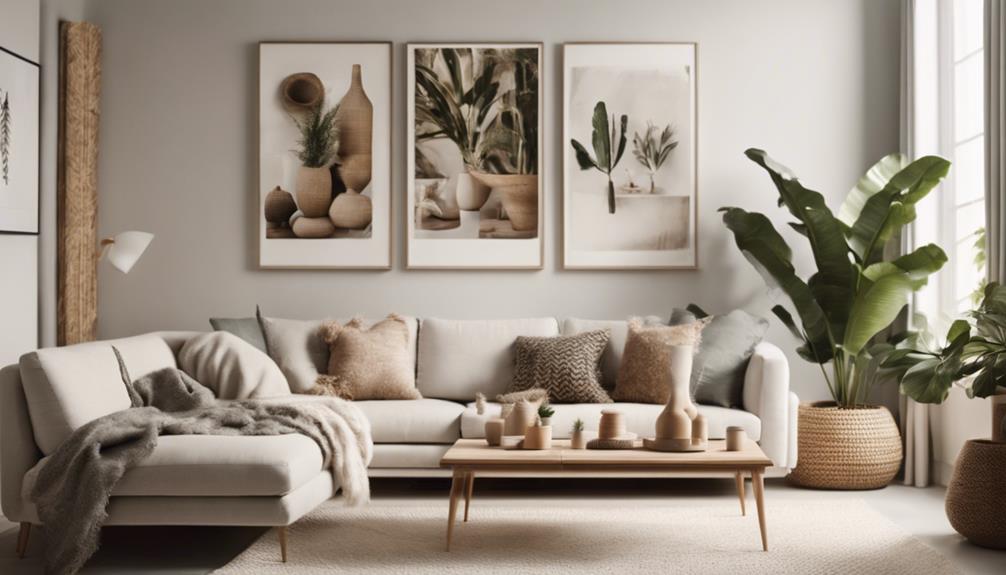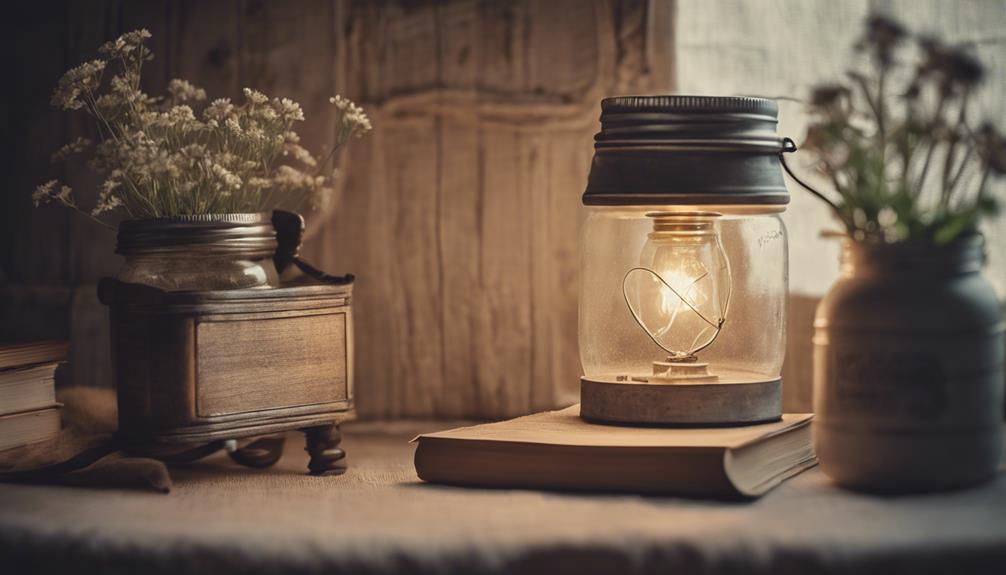To start a successful home decor brand, it is essential to conduct thorough market research. This involves analyzing trends, studying consumer behavior, and visiting stores. A key step is defining a unique selling proposition by creating distinctive designs that cater to your target audience. Additionally, it’s crucial to build a strong brand identity with a memorable name and consistent visuals. Developing a compelling product line that emphasizes quality and uniqueness is also vital. Establishing an online presence through a professional website and engaging on social media is essential for success. Effective marketing strategies such as defining your USP, active social media engagement, and collaborating with influencers can help boost your brand. Prioritizing customer experience is crucial for building loyalty. By mastering these steps, you can create a thriving home decor brand!
Key Takeaways
- Define a unique design aesthetic that sets you apart.
- Develop a strong brand identity reflecting personality and values.
- Create a compelling product line with quality and uniqueness.
- Establish a cohesive online presence for brand visibility.
- Focus on exceptional customer experience to build loyalty.
Market Research
Before diving into starting your home decor brand, conduct thorough market research to understand customer preferences and identify gaps in the market. Start by analyzing current trends in the home decor industry, such as popular color schemes, materials, and styles.
Look into consumer behavior, purchasing habits, and demographics to pinpoint your target audience accurately. Utilize online surveys, focus groups, and social media analytics to gather valuable insights.
Visit home decor stores, both physical and online, to observe the products available, pricing strategies, and overall customer experience. Pay attention to customer reviews and feedback to understand what they love and what they feel is lacking in the market.
Additionally, study your competitors to identify their strengths and weaknesses, allowing you to position your brand uniquely.
Define Your Unique Selling Proposition
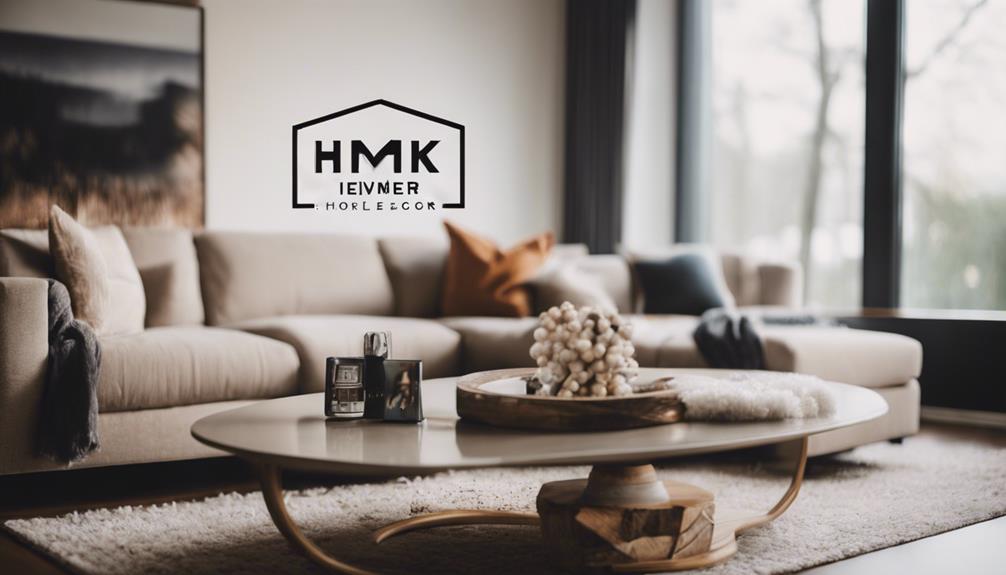
When starting your home decor brand, it's essential to define your unique selling proposition. Focus on developing a distinct design aesthetic that sets you apart in the market. Consider what sets your brand apart from others in terms of style, quality, and overall image. Once you’ve established your unique selling proposition, it’s time to create a cohesive brand identity that reflects this. Utilize social media, collaborations, and endorsements to elevate your brand and attract the attention of real estate titans looking for stylish and high-quality home decor options.
Aligning with your target audience and highlighting your competitive differentiation will help you stand out and attract customers.
Unique Design Aesthetic
To stand out in the competitive home decor market, defining your unique design aesthetic is essential to establishing your brand's distinctive appeal. Your design aesthetic is the visual language that will set you apart from other home decor brands.
Here are some tips to help you define your unique design aesthetic:
- Reflect Your Personality: Infuse your brand with elements that resonate with your own style and personality. Let your brand be a reflection of who you are.
- Research Trends, But Be Original: Stay informed about current trends in home decor, but always add your personal twist to create something fresh and unique.
- Consistency is Key: Maintain a consistent design aesthetic across all your products to reinforce your brand identity and make it easily recognizable to customers.
Target Audience Alignment
Defining your unique selling proposition begins with aligning your target audience's needs and preferences with what makes your home decor brand stand out. To create a successful home decor brand, you must understand who your ideal customers are and what sets your products apart from the competition.
Start by conducting market research to identify the specific demographics, interests, and purchasing behaviors of your target audience. By gaining insights into their lifestyle preferences, design aesthetics, and budget considerations, you can tailor your brand messaging and product offerings to resonate with their unique tastes.
Consider what makes your home decor products distinctive. Whether it's your commitment to sustainable materials, innovative design concepts, or exclusive artisan collaborations, your USP should directly address the desires and pain points of your target customers.
Highlighting these unique aspects in your branding and marketing efforts will help differentiate your brand in a crowded marketplace and attract a loyal following of design-savvy consumers who value what your brand uniquely offers.
Competitive Differentiation
Aligning your unique selling proposition with what sets your home decor brand apart from competitors is key to establishing a strong market presence.
To define your unique selling proposition and stand out in the competitive home decor industry, consider these key factors:
- Quality Craftsmanship: Emphasize the superior quality of materials and craftsmanship in your products to highlight their durability and aesthetic appeal.
- Innovative Design: Showcase your brand's commitment to innovation by introducing unique design elements that set your products apart from traditional home decor offerings.
- Exceptional Customer Service: Provide outstanding customer service to create a positive shopping experience and build long-lasting relationships with your customers.
Develop a Strong Brand Identity
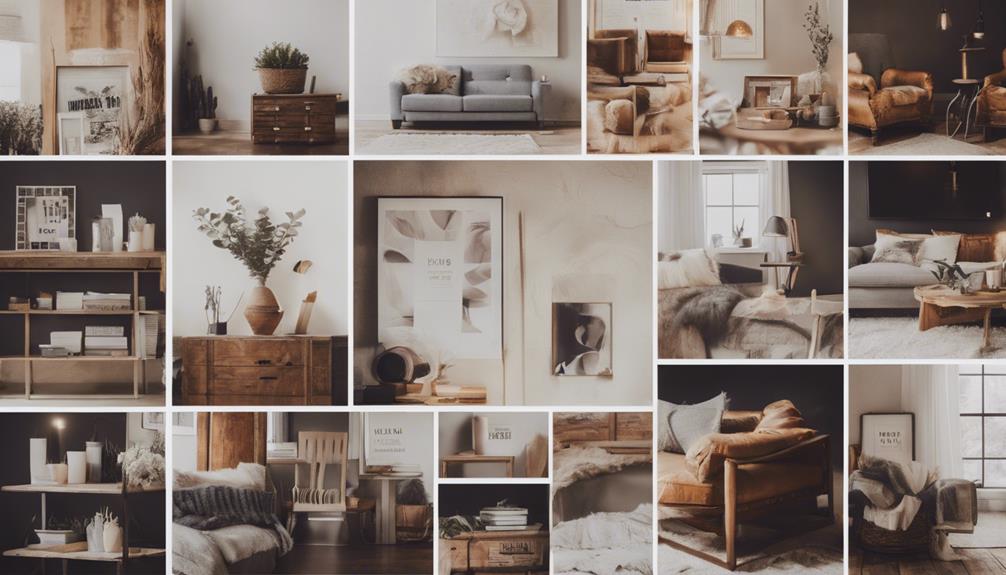
How can you make certain that your home decor brand stands out in the market and resonates with your target customers? Developing a strong brand identity is key to achieving this. Start by defining your brand's unique personality, values, and mission. This will guide all aspects of your brand, from design to marketing.
Create a memorable brand name and logo that reflects the essence of your brand. Consistency is essential – make sure that your brand's visuals, messaging, and tone are cohesive across all platforms. This will help build brand recognition and trust among your audience.
Consider the emotions you want your brand to evoke in customers. Whether it's luxury, comfort, creativity, or sustainability, infuse these feelings into every touchpoint of your brand experience.
Engage with your audience on social media and through other channels to build relationships and create a community around your brand.
Create a Compelling Product Line
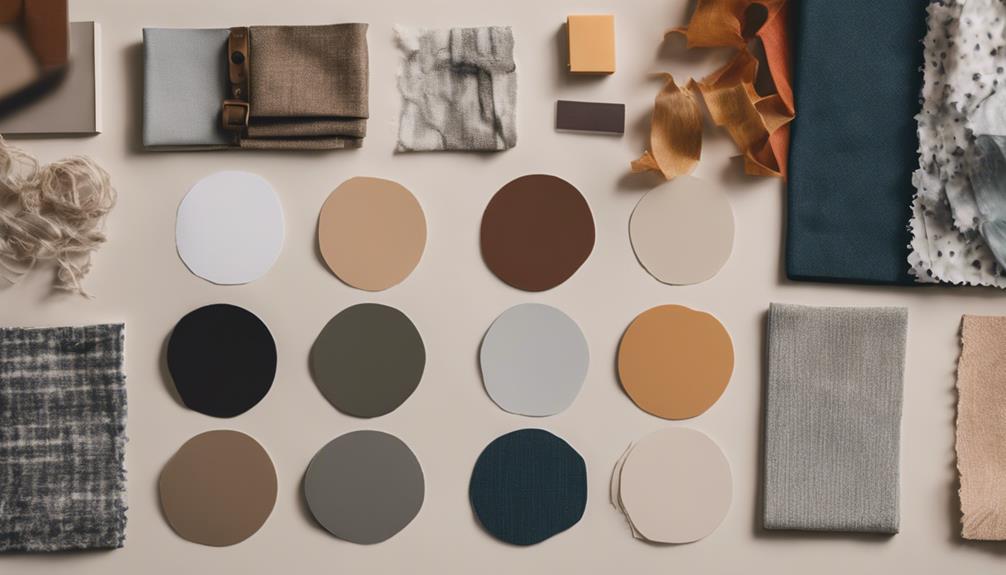
To create a compelling product line for your home decor brand, focus on designing items that align with your brand's unique personality and values. Think about what sets your brand apart and how you can reflect that in your products.
Here are some tips to help you craft a product line that stands out:
- Stay True to Your Aesthetic: Maintain a consistent design style across all your products to create a cohesive look that customers can easily recognize.
- Offer Variety: Provide a range of products that cater to different tastes and preferences within your brand's aesthetic, ensuring there's something for everyone.
- Focus on Quality: Prioritize quality materials and craftsmanship to deliver products that not only look good but also last long, earning trust and loyalty from your customers.
Establish an Online Presence
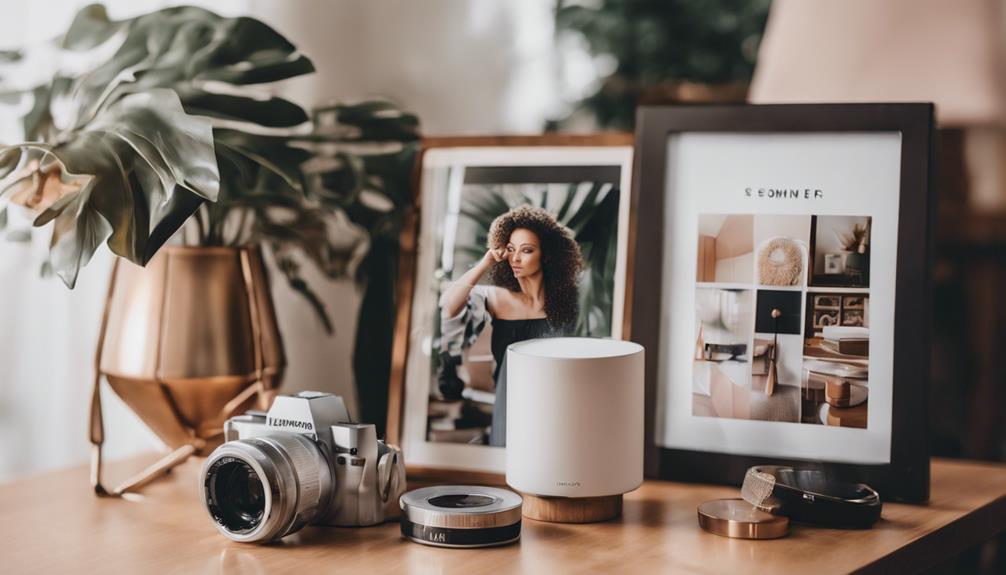
Enhance your home decor brand's visibility and reach by developing a strong online presence. In today's digital age, having a solid online presence is essential for the success of your brand.
Start by creating a professional website that showcases your products in an appealing way. Make sure the website is user-friendly, visually engaging, and optimized for mobile devices to cater to a wider audience.
Utilize social media platforms like Instagram, Pinterest, and Facebook to connect with your target market. Share high-quality images of your products, engage with your followers through comments and messages, and use relevant hashtags to increase your visibility.
Consistency is key, so aim to post regularly and maintain a cohesive brand aesthetic across all your online platforms.
Consider starting a blog to share home decor tips, trends, and DIY ideas. This can help establish your brand as an authority in the industry and drive traffic to your website.
Additionally, explore options for online advertising such as Google AdWords or social media ads to increase brand awareness and reach a larger audience.
Build Relationships With Suppliers

Establish strong relationships with reliable suppliers to guarantee a steady and high-quality supply of materials for your home decor brand. Building solid connections with your suppliers is vital for the success of your business.
Here's how you can effectively cultivate these relationships:
- Communication is Key: Keep open lines of communication with your suppliers. Regularly check in, provide feedback, and discuss any issues that may arise promptly.
- Be Transparent: Honesty and transparency are essential in any business relationship. Be clear about your expectations, timelines, and requirements to avoid misunderstandings.
- Show Appreciation: Acknowledge the value your suppliers bring to your brand. Expressing gratitude, whether through a simple thank you note or a small token of appreciation, goes a long way in nurturing a positive and lasting partnership.
Implement Effective Marketing Strategies

Strengthen your brand's presence and reach by implementing effective marketing strategies that resonate with your target audience and drive engagement. Begin by defining your unique selling proposition (USP) and crafting a compelling brand story that showcases what sets your home decor brand apart. Utilize social media platforms to showcase your products, engage with your audience, and build a community around your brand. Collaborate with influencers and bloggers in the home decor niche to reach a wider audience and gain credibility. Invest in visually appealing content creation, including high-quality images and videos that highlight your products in various home settings.
| Marketing Strategy | Description |
|---|---|
| Define USP and Brand Story | Clearly define what makes your brand unique and craft a compelling story around it. |
| Social Media Engagement | Utilize platforms like Instagram, Pinterest, and Facebook to showcase products and engage with your audience. |
| Collaborate with Influencers | Partner with influencers and bloggers in the home decor space to expand your brand's reach. |
| Visual Content Creation | Invest in creating visually appealing content to showcase your products in different home settings. |
Focus on Customer Experience
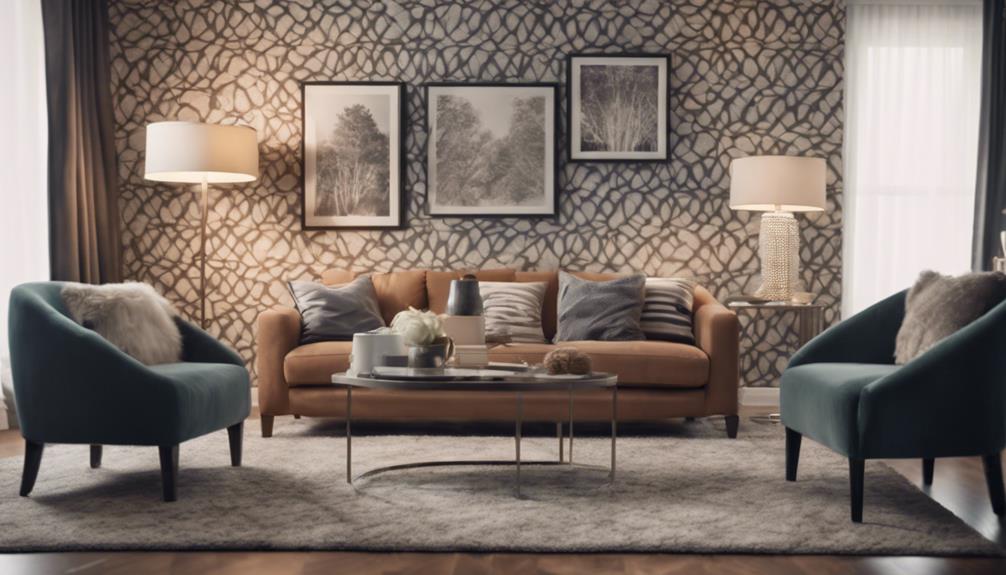
By prioritizing excellent customer service, you can create a memorable and positive experience for every individual interacting with your home decor brand. Ensuring a focus on customer experience is essential for building a loyal customer base and standing out in the competitive home decor market. Here are some key ways to enhance the customer experience:
- Personalized Interactions: Engage with customers on a personal level by addressing them by name and offering tailored product recommendations based on their preferences.
- Seamless Ordering Process: Make the purchasing journey smooth and hassle-free, from browsing products on your website to completing the checkout process.
- Prompt Customer Support: Provide quick and efficient support through various channels like live chat, email, or phone to address any queries or concerns promptly.
Frequently Asked Questions
How Can I Protect My Home Decor Brand From Copycats?
To protect your home decor brand from copycats, consider trademarking your unique designs, implementing strong branding strategies, monitoring the market for potential infringements, and taking legal action if necessary. Safeguarding your intellectual property is essential.
What Are the Key Factors to Consider When Pricing My Products?
When pricing your products, remember: value is like a secret ingredient. Blend quality, costs, and market trends. Don't underprice and undervalue your brand. You're crafting a masterpiece, so guarantee your pricing reflects its worth.
How Do I Effectively Handle Customer Complaints and Feedback?
When customers provide feedback or complaints, address them promptly and empathetically. Listen actively, apologize if necessary, and offer solutions. Implement feedback to improve your products or services. Showing genuine care builds customer loyalty and trust.
Is It Important to Attend Trade Shows and Exhibitions for Brand Exposure?
You're like a bright star in a dark sky at trade shows and exhibitions. Attending them is essential for brand exposure. You'll meet potential customers, showcase your unique offerings, and network with industry professionals to stand out.
How Can I Stay Updated on the Latest Home Decor Trends and Styles?
To stay updated on the latest home decor trends and styles, follow influential interior designers on social media, subscribe to design magazines, attend industry events, and visit trade shows. Engage with the community to refine your brand's aesthetic.
Conclusion
So, now that you have all the tools and strategies to start your own home decor brand, you might be thinking it's too competitive to stand out.
But remember, with a unique selling proposition, strong brand identity, and compelling product line, you can carve out your own space in the market.
By focusing on customer experience and building strong relationships with suppliers, you'll create a brand that truly stands out from the rest.
Good luck on your brand-building journey!
